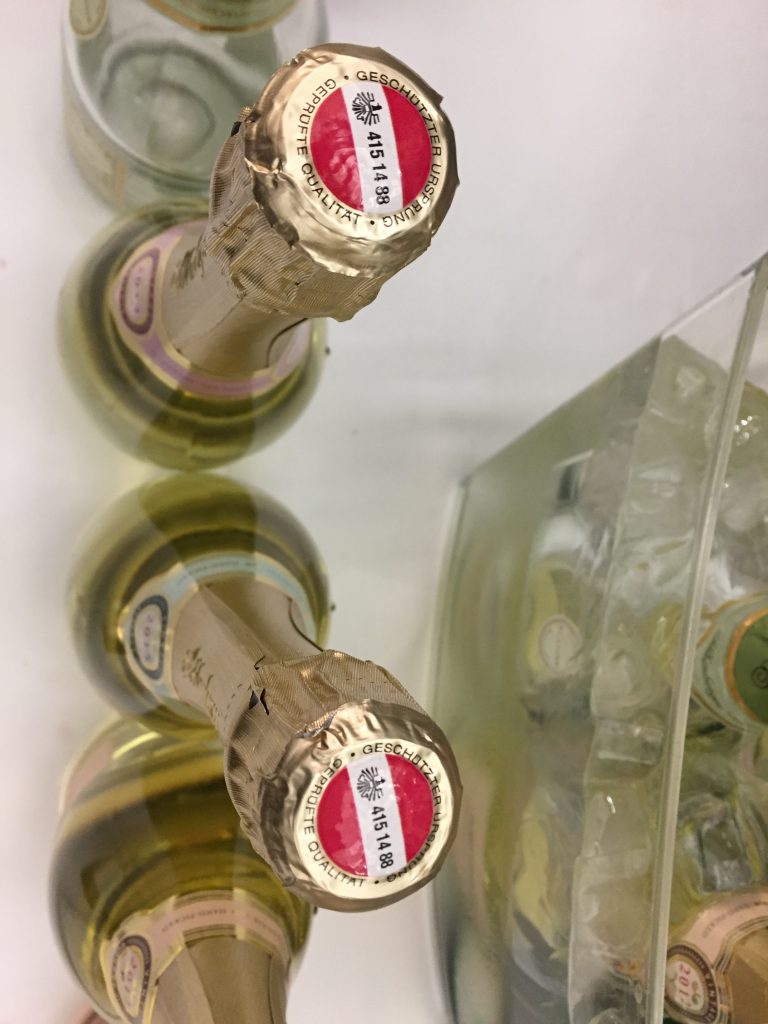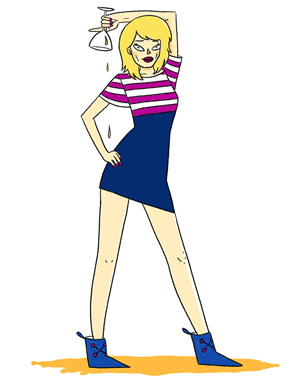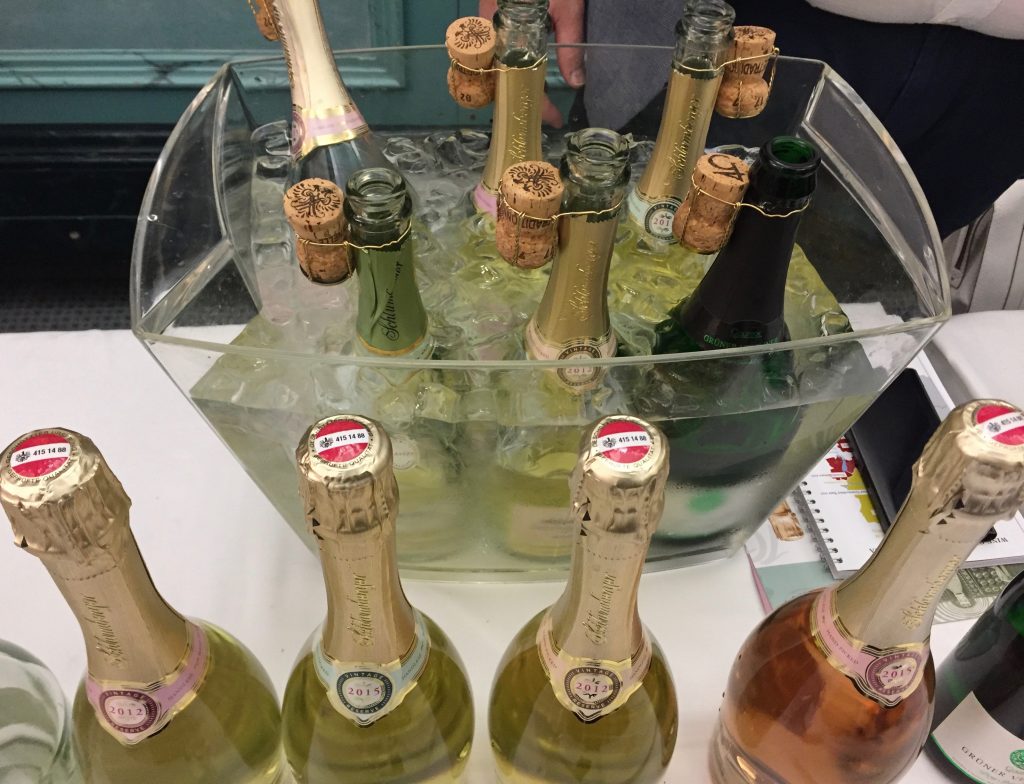
The Nose is particularly partial to sparking wine – Champagne for high days, holidays, weekends, friends round… any excuse to open a decent bottle. And for everyday? Too often as not, a good quality DOCG Prosecco. In Alsace I have recently found a good source of bottle fermented fizz, but am keen to find alternatives to my sparkling experiences.
I needed no persuasion to put the nose to the test on a line up of Austrian Sekt.
A couple of years ago the Austrian wine authorities decided to formalise regulations for their sparkling wine and created a quality pyramid. This wine now carries the new red capsule as seen above. At the base of the pyramid we have “Classic”. This has 9 month on lees and can be made in the charmat/tank method, the way Prosecco is made.
Up a step to “Reserve” made in the Champagne or Traditional method, (ie bottle fermented) for 18 months on lees.
Topping the pyramid is “Grand Reserve.’ This is bottle fermented and kept for 36 months on lees… where it will still be, given this hierarchy was launched two years ago.
However there’s no time like the present for a spot of promotion. The mid-level “Reserve” should be reaching the market about now.
A variety of different grapes was going to keep this tasting interesting. An impressive 36 varieties can be used, but in practice Grüner Veltliner and Riesling are the used to make Austria’s spicy sparkling and those stalwarts of fizz the world over, Chardonnay and Pinot-Noir, are also favourites. There was a little Blaufransih, Zweigelt, Welschriesling, Pinot blanc and Blauburger.
There seemed no particular quality order to the tasting as the star wine the tasting was third in the line-up.
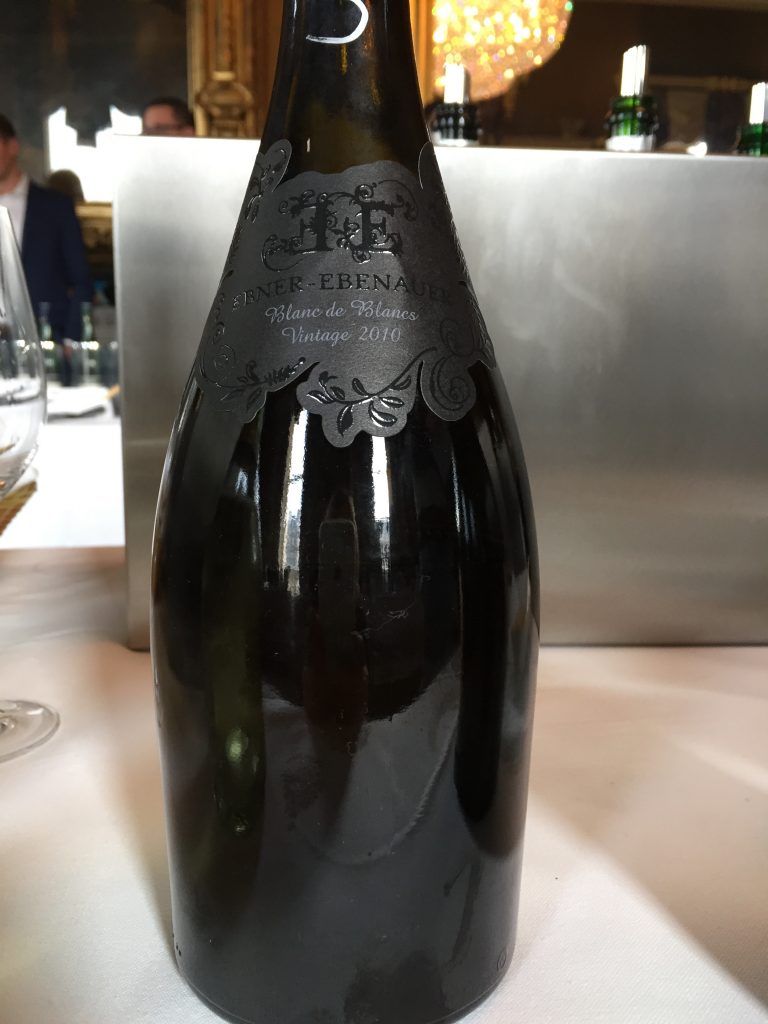
This wine was Ebner-Ebenauer 2010 Chardonnay, Blanc de Blanc, Ostrerreich Zero dosage. Now this tickled my tastebuds no end. It’s a serious wine. Arresting autolytic aroma of freshly baked buttery, nutty biscuits. A firm attack on the palate followed. It was compact, rich and intense with the complexities of age and an intense, long finish. No mucking about!
This wine is made by Marion Ebner who is an experimental young winemaker. I was sufficiently interested in this wine to track her down and have written the next blog about her. Her estate is in the North of Austria on the Czech boarder and she is quick to point out it’s on the same latitude as Champagne. She is a Champagne lover and Blanc de Blanc in particular. In 2006 she suggested to her husband “why don’t’ we have a go?” And the smart man agreed.
She considers that 2006 was not the best vintage in which to start. “It was too warm and I was too late to make a classic wine. We harvest later than the Champagne region, but we still need the acidity. My first attempt seemed one dimensional. 2007 was cooler and more focused, but it also seemed one dimensional. It was just fresh. I wanted to make more than that. I love Krug!. I left the wines for 6 years and they got better and better and after 7 years they opened up. I did not want to use dosage. They tasted cheap with dosage. They are bottled without sugar or SO2.”
The base wine comes from a single vineyard. Chardonnay is planted on a loess soil with a high percentage of limestone, so the base wine has a naturally mineral character. It is harvested at the end of August or the beginning of September. It has a very soft pressing with no rotation, just pressing. It ferments in 500l old barrels and remains there a year on lees. It is very cold so it doesn’t go through MLF. And then it has 6 years bottle ferment. So the 2010, which is the current release, was disgorged in September 2017. “I have calculated that every bottle goes through my hands 100 times,” remarks Marion.
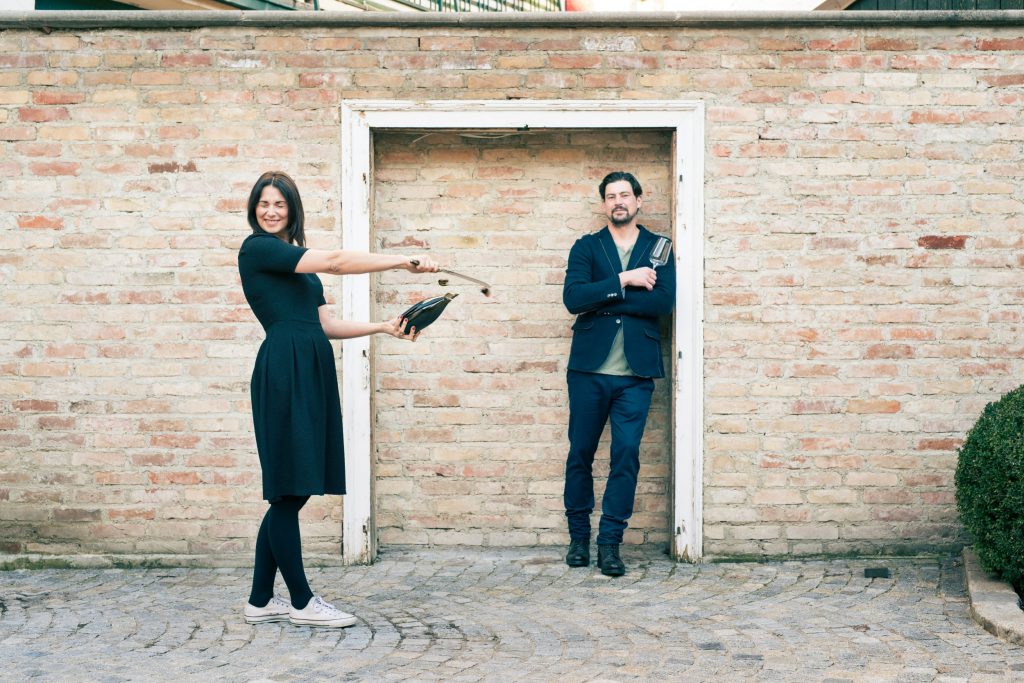
2010 was clearly not an easy vintage. Marion describes 2010 as “very wet and cool. We had to wait for very long time until November to get all the ripeness we are looking for, meanwhile noble and grey rot started. We made 4 selections per vineyard. The acidity level was much higher than normal.
Regardless of the challenging conditions, this is an excellent wine and maybe 2010 was better suited to sparkling? I was excited when I tasted Marion’s Blanc de Blanc imagining similar things to come in the Sekt line-up. Nothing reached this standard, but there were some pleasing wines and the Nose will certainly be popping some Austrian Sekt in the cellar.
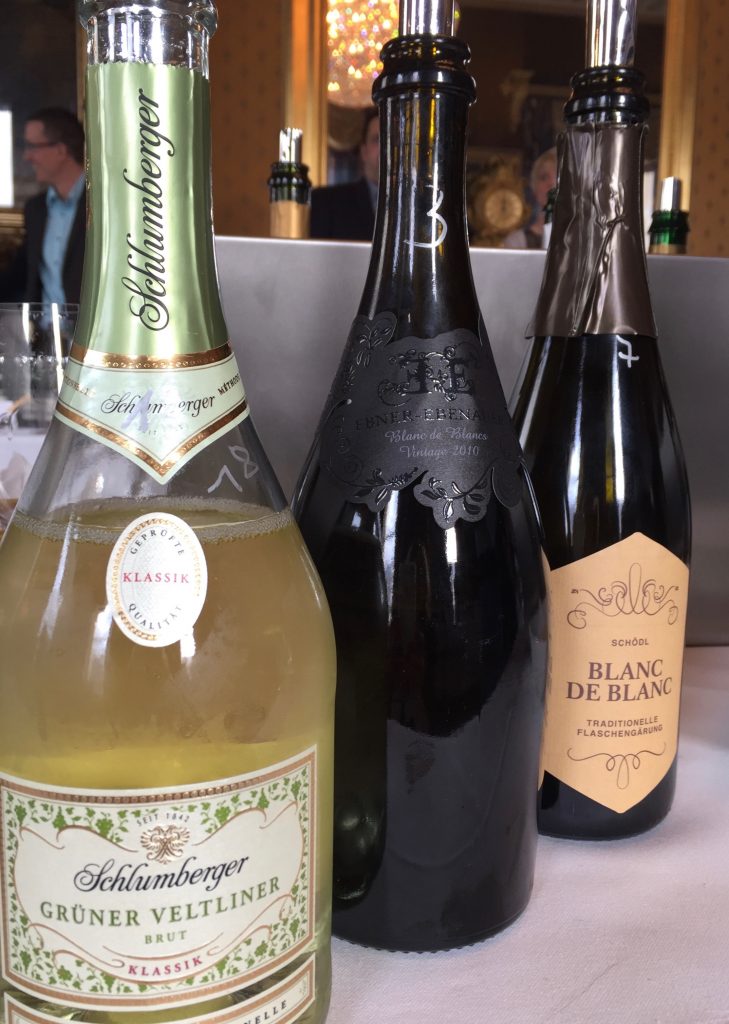
Here are the highlights of my inhaling.
Best low or no dosage
The first bunch had no or low dosage. Where there is the ripeness of fruit to balance the low dosage, this can be a very good thing. The Nose is all in favour of somewhat austere finish.
Schödl Loidesthal 2013 Ôsterreich Brut, Blanc de Blanc
This is a full, soft and creamy wine. Warm toasty character. Lots of smooth, buttery lees and a hint of apricot on the finish. This had just 3g/l residual.
Schloss Gobelburg Blanc de Blanc Sekt, Brut
Lightly bready aroma, nicely rounded with fresh acidity and a refreshing zesty finish. Pretty.
Best Grüner Veltliner
Schlumberger 2016 Osterreich Sekt Grüner Veltliner
Appealing aromatic nose and spicy palate. The aromatics of the Grüner Veltliner float above the light palate. It is easy and elegant. Lower acidity and some residual sugar make it very accessible.
Schlumber is the oldest sparking wine producer in Austria. They’ve been at it since 1842, so they should know a thing or two. I liked this wine and felt moved to see what else they had. This is their entry level bottle fermented wine at £17. Part with £23 and the 2012 Pinot Noir Blanc de Noirs Reserve is a good deal more interesting, but my favourite is the 2015 Pinot Noir Reserve which is more complex.
Best Rosé
Malat 2013 Osterreich Brut Nature Pinot Noir
This is petally and quite soft. No dosage, but lower acidity. It was pleasant.
Kracher NV Osterreich Sekt Brut Cuvée Rosé
A light weigh rose with a pretty palate. There are notes of red cherries together with light toasty notes. I might work with a delicate dessert.
Hartl 111 2016 Osterreich Sekt, Pinot Noir
Now this is a good food fizz. It has some tannic bite. It’s young, but has good autolytic, marmite yeasty character and it is very fresh. This puckering palate is softened at the end with 9 g/l residual sugar.
A final thought:
I found some slightly unusual tropical flavours of mango and passionfruit in the line up of sekt. Chardonnay that was just too ripe in some cases? In others it was not difficult to track down the cause – spicy varieties. Sadly there was only one Riesling. I didn’t find the kerosene aromatics worked successfully with the autolytic character in the example shown. I would like to have seen others, as I have had more engaging examples in Alsace.
Chardonnay and Pinot Noir won the day for me, but Grüner Veltliner has its place in sparkling wine and does offer an interesting alternative.
Stockists
Star of the show.
Ebner-Ebenauer 2010 Chardonnay, Blanc de Blanc, Ostrerreich.
Available from Roberson Wines in the UK £65.
Schlumberger: Champagne Warehouse Ltd
Malat: Castelnau Wine Agencies
Heinrich Hartl 111: Merry Widows. Direct Wines
Kracher: Top Selection Ltd
Schloss Gobelburg: Clarke Foyster Wines Ltd.
